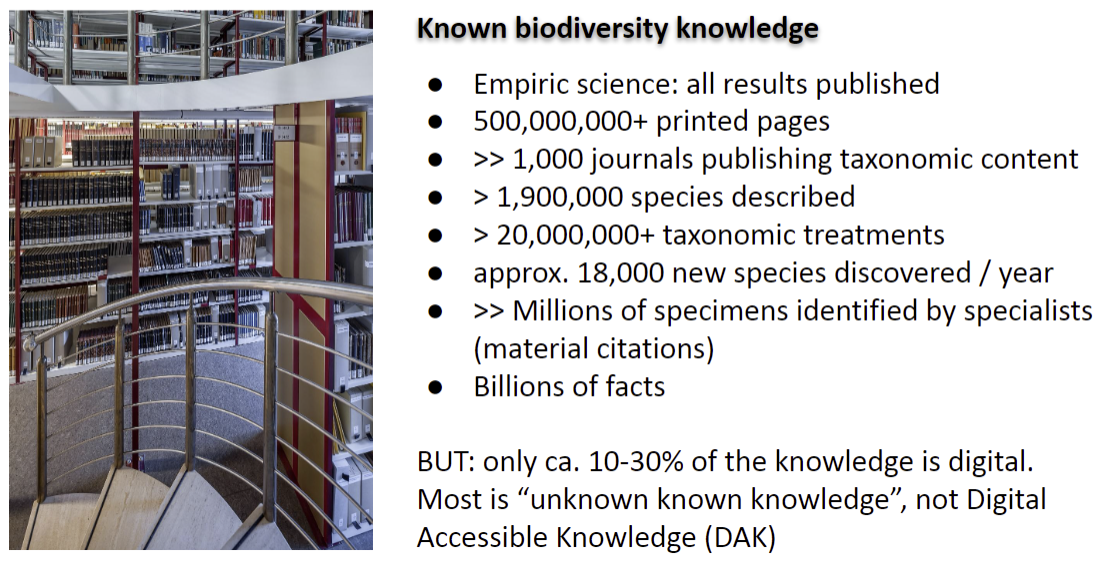Data liberation implies extraction and capacity of reusing of information from the resources and systems where it was originally created, this being a scientific publication, allocating data in datasets or adding content and uploading in a certain repository or platform.
Data liberation in the context of biodiversity refers to the practice of making biodiversity data freely available and accessible to all types of users. This movement aims to promote transparency, collaboration, and the democratisation of scientific knowledge related to biodiversity. It supports the general need of open science and anchors on the substantial principles for Findable, Accessible, Interoperable and Reusable (FAIR) data to produce excellent science.
As Donat Agosti (PLAZI) indicates, ''most of what scientists discovered about biodiversity and published, totaling a corpus of an estimated 500 million printed pages stacked up in our libraries and more recently, in digital format, is not known (...) but it doesn’t need to be like this. Scientific publications are structured, they use standard means to express the results. Arguments cite previous arguments building a network of knowledge. If represented digitally, this knowledge could be represented as a knowledge graph and analysed.''1

The challenge implies to extract the published data on biodiversity that may remain imprisoned in PDF formats and physical printed copies and to free biodiversity knowledge for its further use and exploitation, going beyond the need to scan papers, pay for accessing them or exploring how to read those that even machines cannot read at scale.
1 Agosti, Donat. (2022, June 30). Beyond the print and PDF prisons: Data about biodiversity want to be free. World Biodiversity Forum 2022 (WBF2022), Davos, Switzerland. Zenodo.
https://doi.org/10.5281/zenodo.6777916